Cerebral palsy
- PMID: 27188686
- PMCID: PMC9619297
- DOI: 10.1038/nrdp.2015.82
Cerebral palsy
Abstract
Cerebral palsy is the most common cause of childhood-onset, lifelong physical disability in most countries, affecting about 1 in 500 neonates with an estimated prevalence of 17 million people worldwide. Cerebral palsy is not a disease entity in the traditional sense but a clinical description of children who share features of a non-progressive brain injury or lesion acquired during the antenatal, perinatal or early postnatal period. The clinical manifestations of cerebral palsy vary greatly in the type of movement disorder, the degree of functional ability and limitation and the affected parts of the body. There is currently no cure, but progress is being made in both the prevention and the amelioration of the brain injury. For example, administration of magnesium sulfate during premature labour and cooling of high-risk infants can reduce the rate and severity of cerebral palsy. Although the disorder affects individuals throughout their lifetime, most cerebral palsy research efforts and management strategies currently focus on the needs of children. Clinical management of children with cerebral palsy is directed towards maximizing function and participation in activities and minimizing the effects of the factors that can make the condition worse, such as epilepsy, feeding challenges, hip dislocation and scoliosis. These management strategies include enhancing neurological function during early development; managing medical co-morbidities, weakness and hypertonia; using rehabilitation technologies to enhance motor function; and preventing secondary musculoskeletal problems. Meeting the needs of people with cerebral palsy in resource-poor settings is particularly challenging.
Conflict of interest statement
Competing interests statement
H.K.G. has received unrestricted educational grants from pharmaceutical companies including Allergan. Current research support is from the Hugh Williamson Foundation and the National Health and Medical Research Council of Australia, Cerebral Palsy Centre of Research Excellence (CRE). J.‑P.L. has held grants from the Guy’s and St. Thomas Charity New Services and Innovation Grant G060708; the Dystonia Society UK Grants 01/2011 and 07/2013 and Action Medical Research GN2097, has acted as a consultant for Medtronic Ltd and benefited from unrestricted educational grants by Medtronic Ltd. B.D. and P.R. are senior members of the editorial board of Mac Keith Press, the publisher of the 2014 book “
Figures
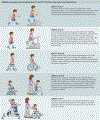


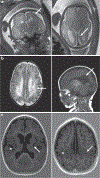



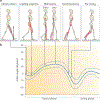
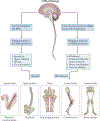

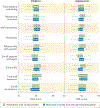
References
-
-
Rosenbaum P et al. A report: the definition and classification of cerebral palsy April 2006. Dev. Med. Child Neurol. Suppl 109, 8–14 (2007).
This paper contains the agreed definition of cerebral palsy and the rationale behind each of the words in the definition.
-
-
- Brooks JC et al. Recent trends in cerebral palsy survival. Part I: period and cohort effects. Dev. Med. Child Neurol 56, 1059–1064 (2014). - PubMed
-
- Brooks JC et al. Recent trends in cerebral palsy survival. Part II: individual survival prognosis. Dev. Med. Child Neurol 56, 1065–1071 (2014). - PubMed
-
-
Rosenbaum P & Gorter JW The ‘F‑words’ in childhood disability: I swear this is how we should think! Child Care Health Dev 38, 457–463 (2012).
This paper has become very popular, combining the WHO’s important ideas about health with some specific but tongue-in-cheek ‘words’ with which to think about life-course issues for children with cerebral palsy (and in fact many other developmental conditions).
-
-
-
Little WJ On the incidence of abnormal parturition, difficult labour, premature birth and asphyxia neonatorum on the mental and physical condition of the child, especially in relation to deformities. Trans. Obstet. Soc 3, 293–344 (1862).
William J. Little provided the first clear description of the cerebral palsy syndrome and set the tone for thinking about aetiology for the next 100 years by identifying premature birth and asphyxia neonatorum as key underlying factors.
-
Publication types
MeSH terms
Grants and funding
LinkOut - more resources
Full Text Sources
Other Literature Sources
Medical

